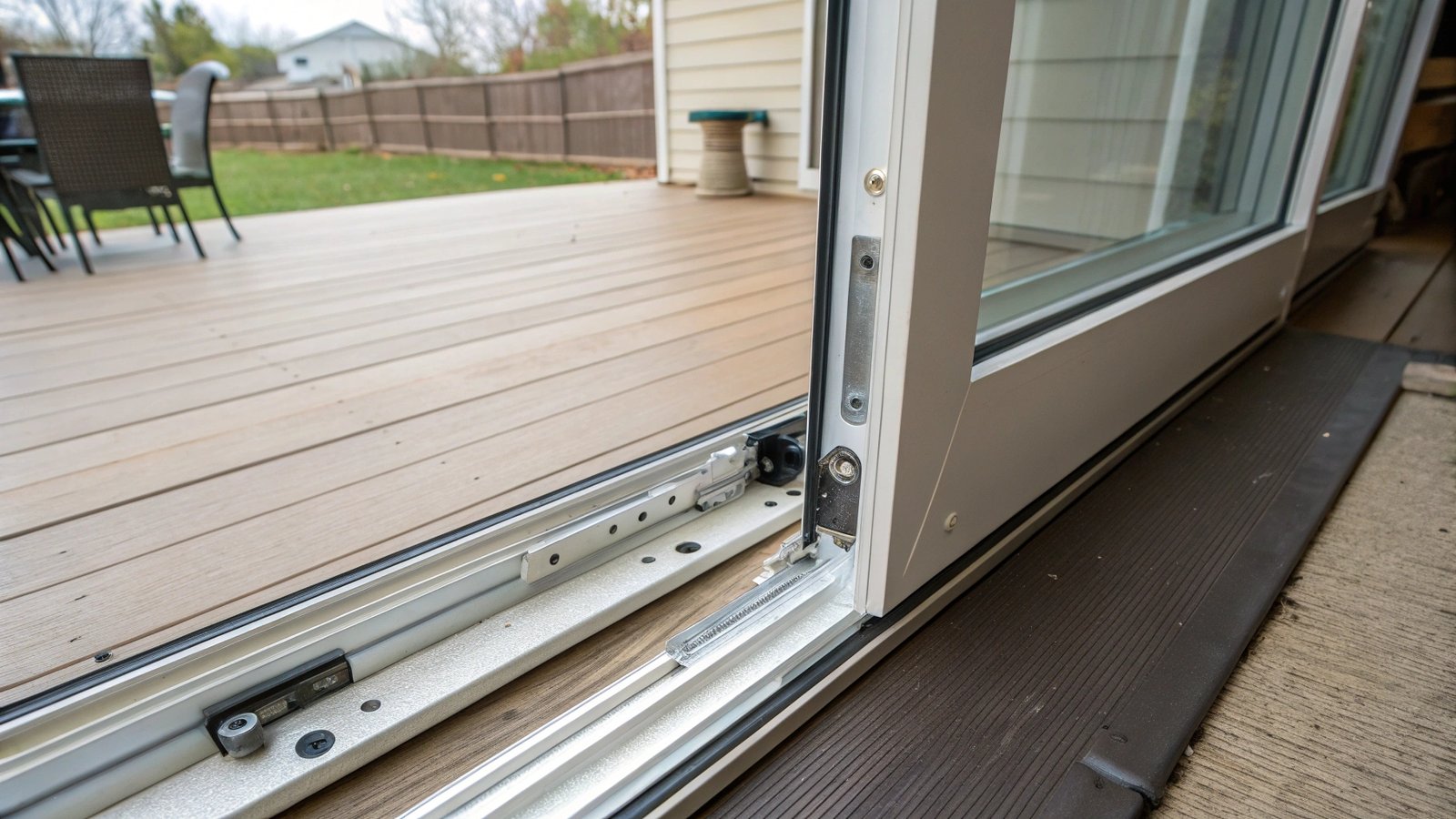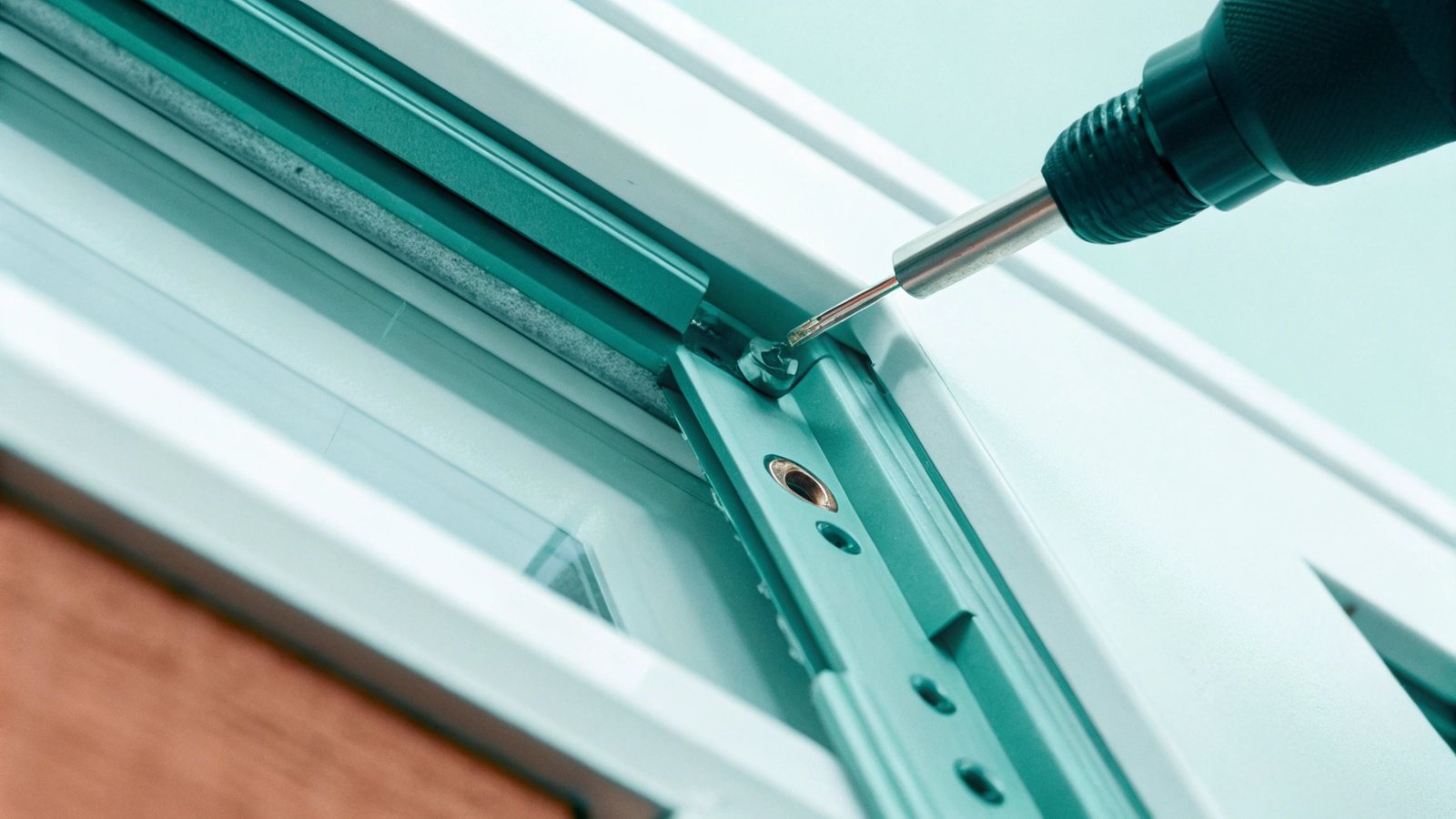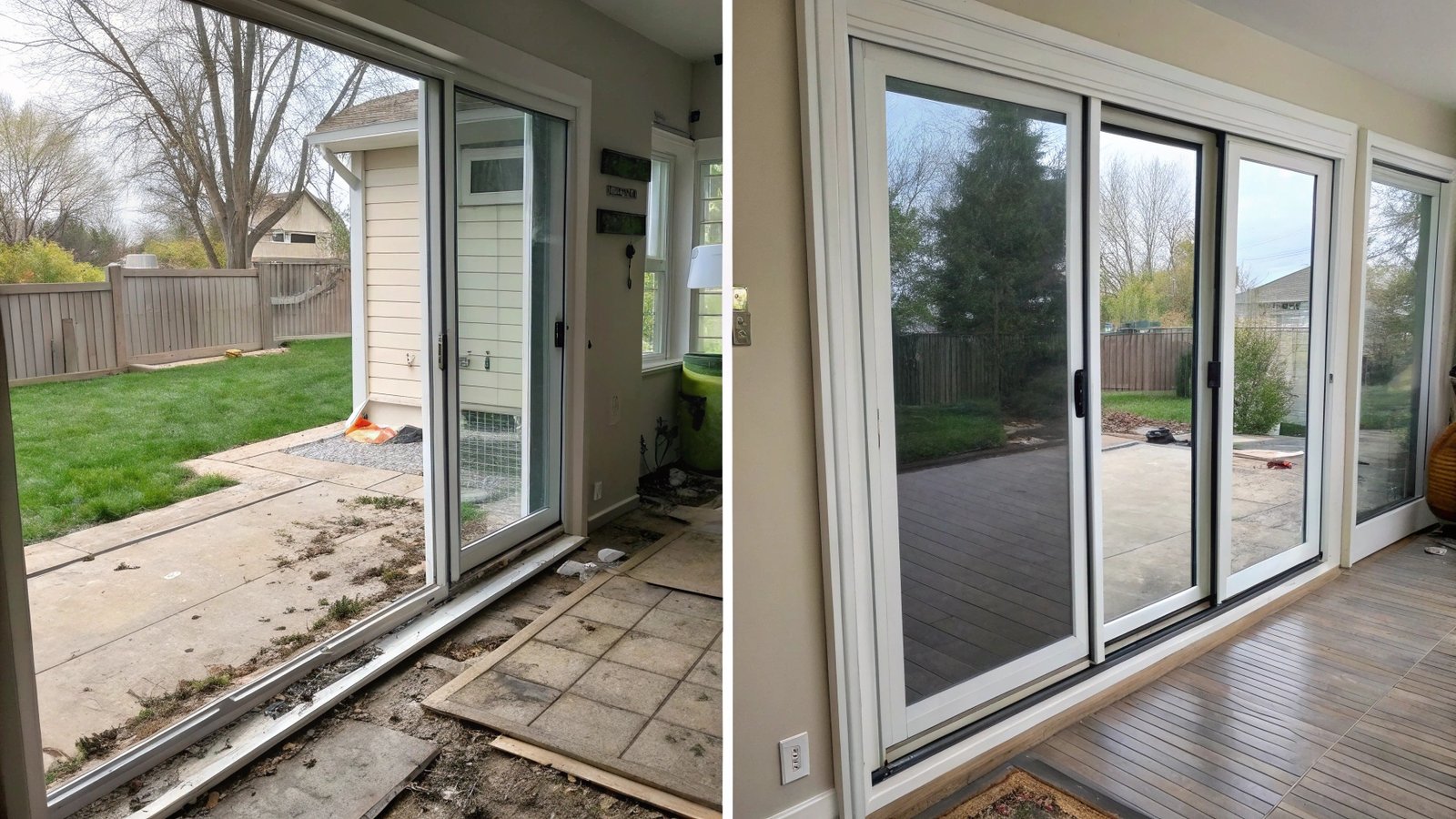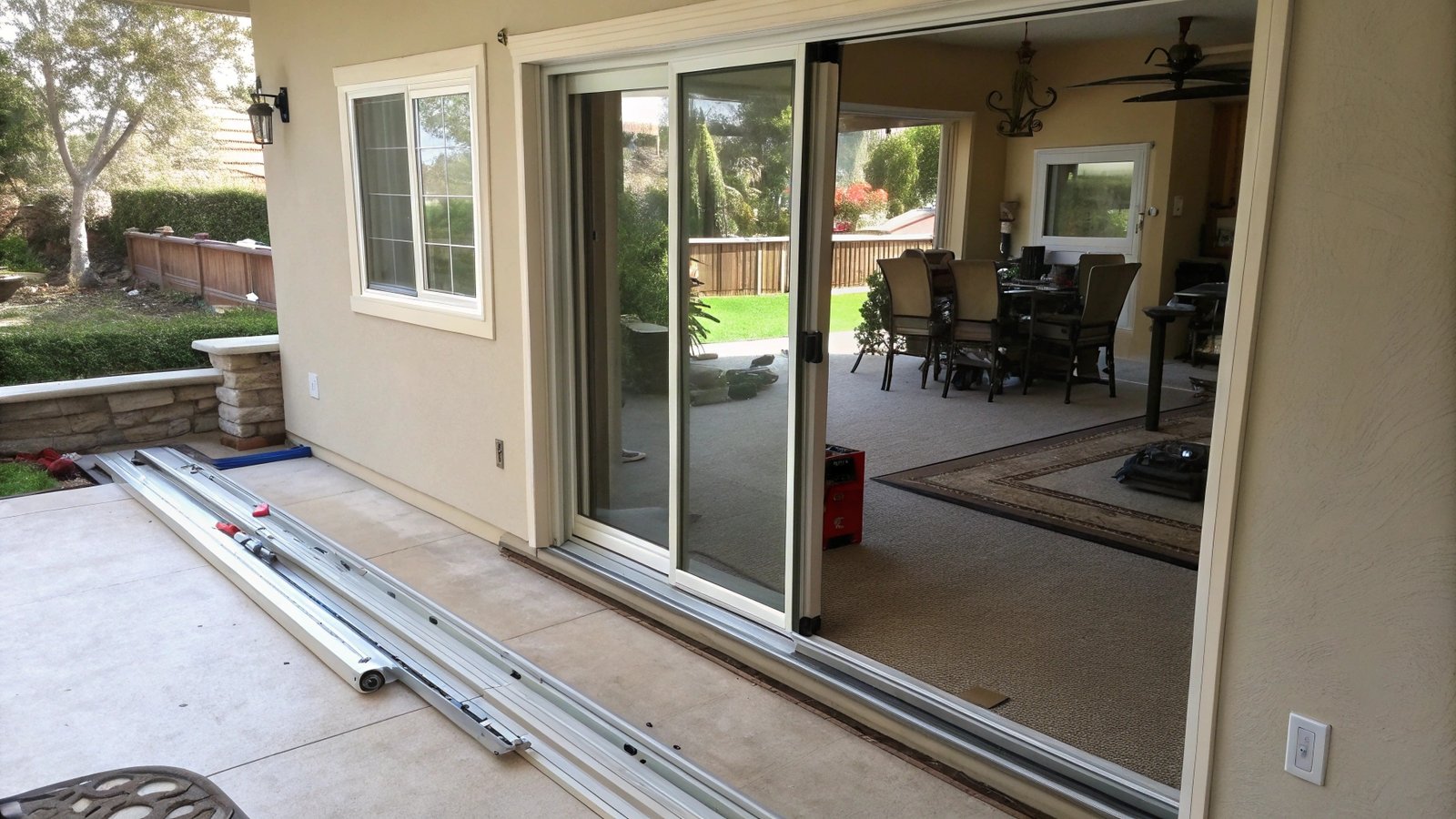Is your patio door sticking, dragging, or just plain hard to open? Don’t worry, you’re not alone.
Adjusting the rollers on your patio door can make a world of difference. By tweaking the rollers, you can align the door properly within the track, leading to smoother operation.

If your patio door still hard to slide even if you adjust the rollers, continue reading this guide.
How Do You Adjust Patio Door Rollers?
Is your patio door giving you a workout every time you try to open it? It’s time to adjust those rollers!
Most patio doors have adjustable rollers at the bottom. You can usually access them through small holes on the inside face of the door. Use a screwdriver to turn the adjustment screws and raise or lower the rollers.

Dive Deeper:
To adjust the rollers properly, you need to find the adjustment screws. Usually, these are located near the bottom corners of the door, on the inside. Look for small access holes. You might need a flashlight to see them clearly. Once you’ve located the screws, use a flathead or Phillips head screwdriver (depending on the screw type) to turn them. Turning the screw one way will raise the roller, and turning it the other way will lower it.
Here’s how to make the adjustments:
| Step | Action | Result |
|---|---|---|
| 1 | Locate the adjustment screws. | Access to the roller adjustment mechanism. |
| 2 | Turn the screw clockwise (usually). | Raises that corner of the door, reducing friction on the track. |
| 3 | Turn the screw counterclockwise (usually). | Lowers that corner of the door, potentially increasing friction but correcting for uneven wear. |
| 4 | Test the door after each adjustment. | Allows you to feel the difference and determine if further adjustments are needed. |
I remember one time, a customer called me, frustrated because their patio door was practically impossible to open. After explaining this adjustment process over the phone, they were amazed at how easily the door glided open once they’d tweaked the rollers. It’s a simple fix that can make a huge difference.
Why is My Sliding Glass Door So Hard to Open and Close?
Is your sliding glass door fighting you every step of the way? There are several reasons why this might be happening.
Common causes include dirty tracks, misaligned rollers, or worn-out rollers. Sometimes, debris gets stuck in the track, or the rollers themselves become damaged over time. These issues increase friction, making the door difficult to slide.

Dive Deeper:
Let’s break down the common culprits behind a stubborn sliding glass door:
- Dirty Tracks: Over time, dirt, dust, and debris accumulate in the door track. This creates friction and makes it harder for the rollers to move smoothly. Regular cleaning is key.
- Misaligned Rollers: As we discussed earlier, if the rollers are not properly aligned, the door won’t sit correctly in the track. This can cause the door to bind or drag.
- Worn-Out Rollers: Rollers wear down over time, especially if the door is used frequently. Worn rollers may not roll as smoothly, or they may even have flat spots.
- Lack of Lubrication: Sometimes, all the rollers need is a little lubrication to get them moving freely again. A silicone-based lubricant works well.
I had a friend who thought he needed a whole new patio door because his was so hard to open. But after I helped him clean the tracks and lubricate the rollers, it was like a brand new door! Regular maintenance can prevent these issues and keep your door sliding smoothly for years.
How Do I Get My Sliding Glass Door to Slide Easier?
Want to transform your patio door from a struggle to a smooth glide? Here’s what you need to do.
Start by cleaning the track thoroughly. Use a brush and vacuum to remove any dirt or debris. Then, lubricate the track and rollers with a silicone-based lubricant. Finally, adjust the rollers as needed to ensure proper alignment.

Dive Deeper:
Let’s get into the specifics of making your sliding glass door slide like a dream:
- Clean the Track: Use a stiff brush to loosen dirt and debris from the track. A vacuum cleaner with a brush attachment can then suck up the loose particles. For stubborn grime, use a mild soap and water solution, but make sure to dry the track thoroughly afterward.
- Lubricate the Track and Rollers: Apply a silicone-based lubricant to the track and rollers. Silicone lubricant is ideal because it doesn’t attract dirt like oil-based lubricants. Spray the lubricant sparingly and wipe away any excess.
- Adjust the Rollers: As we covered earlier, locate the adjustment screws and use a screwdriver to raise or lower the rollers until the door glides smoothly. Make small adjustments and test the door after each one.
- Check the Weather Stripping: Damaged or worn weather stripping can also cause friction. Inspect the weather stripping around the door and replace it if necessary.
- Consider Roller Replacement: If cleaning, lubrication, and adjustment don’t solve the problem, the rollers may be too worn to function properly. Replacing the rollers can often restore the door to like-new condition.
I always tell my customers that a little maintenance goes a long way. A few minutes of cleaning and lubrication every few months can prevent major problems and keep your patio door working smoothly for years. Plus, it’s a lot cheaper than replacing the entire door!
Conclusion
Adjusting the rollers on your patio door can greatly improve its operation. Remember to clean, lubricate, and adjust for a smooth glide.

